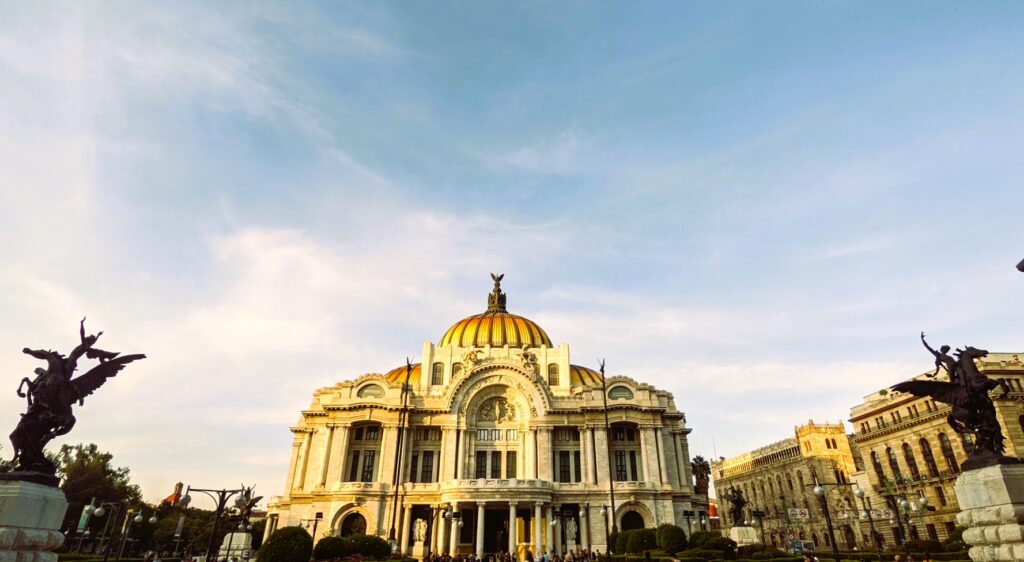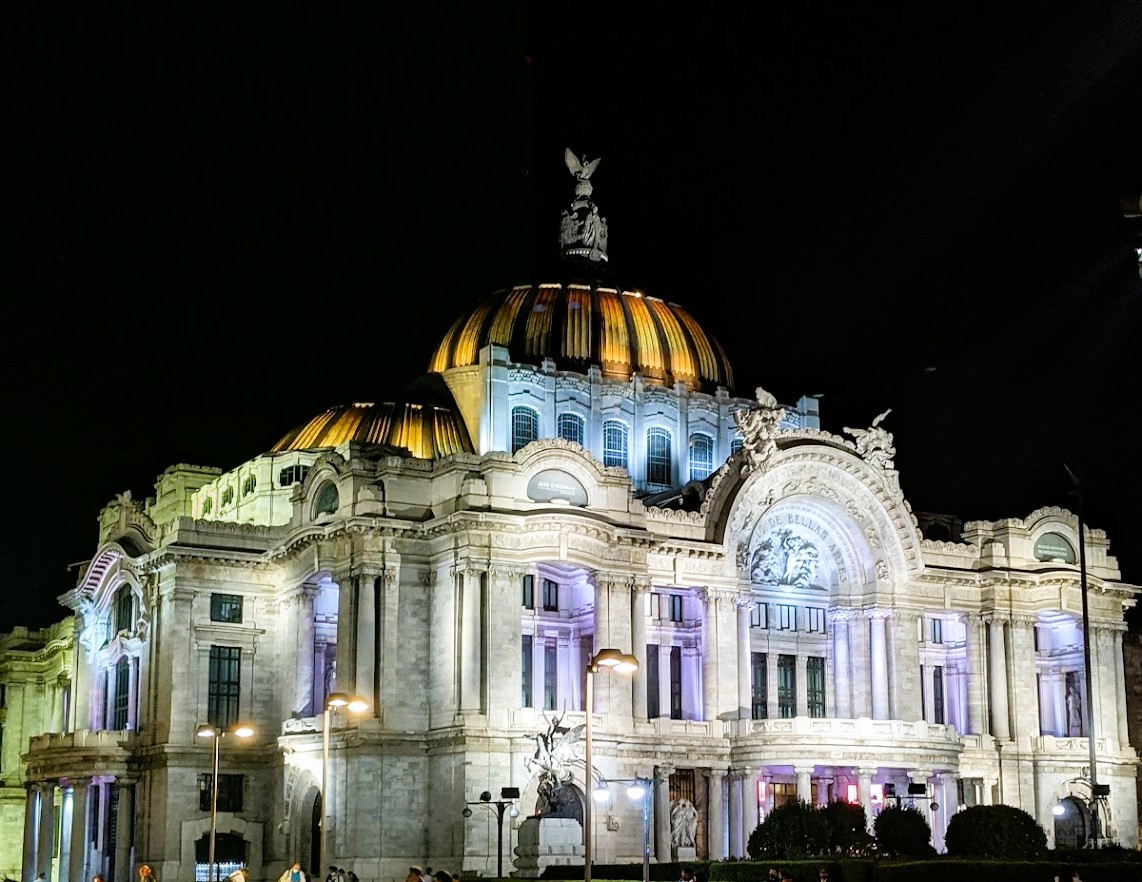
A Palace of Dreams
Mexico City is full of amazing cultural and artistic experiences, and one building that exemplifies it as much as any in the city is the Palacio de Bellas Artes. Truly a majestic symbol of Mexico’s artistic heritage, the magnificent architecture and profound historical significance of the building have made it an iconic landmark and a testament to the city’s deep-rooted passion for the arts.
From taking in one of Diego Rivera’s most controversial murals to seeing the ballet version of Carmen, and then somehow getting caught in the middle of a city-wide protest regarding the erosion of workers’ rights, we spent a lot of time in and around the building. It was absolutely one of our favorite experiences in Mexico City.


Worth the Wait
With construction starting in 1904 under the direction of Italian architect Adamo Boari, the initial vision was a neoclassical design, but Boari later incorporated an Art Nouveau style to complement the aesthetic of the surrounding buildings. It wasn’t until 1934, nearly three decades after construction began, that the Palacio de Bellas Artes was finally completed.
The final design had undergone further modifications by Mexican architects Federico and Fernando Mariscal, who infused the structure with a touch of Art Deco, adding to its distinct and eclectic appeal.
The Palacio de Bellas Artes stands as a testament to the architectural mastery of its creators. The exterior features a combination of Carrara marble, Italian mosaic tiles, and ornate sculptures, which are a sight to behold. The bright orange dome, adorned with intricate details, makes the palace instantly recognizable against the city’s skyline.
Man at the Crossroads
The interior of the Palacio de Bellas Artes boasts an array of magnificent murals, each telling a unique story about Mexico’s history and cultural identity. But there is one mural that stands head and heels above them all.
Diego Rivera’s Man at the Crossroads is the most famous of the murals in the palace, featuring a powerful depiction of the struggles faced by the working class.
Rivera’s original mural was controversially destroyed in New York’s Rockefeller Center, but a re-creation now adorns the Palacio de Bellas Artes, preserving the legacy of the work.
Originally slated to be installed in the lobby of the RCA Building at Rockefeller Center in New York City, the fresco showed aspects of contemporary social and scientific culture.
As originally installed, it was a three-paneled artwork. A central panel, depicting a worker controlling machinery. The middle panel was flanked by two other panels, The Frontier of Ethical Evolution and The Frontier of Material Development, which respectively represented socialism and capitalism.
The Rockefeller family approved of the fresco’s idea: showing the contrast of capitalism as opposed to communism. However, after the New York World-Telegram complained about the piece, calling it, “anti-capitalist propaganda”, Rivera added images of Vladimir Lenin, and a Soviet May Day parade, in response.
When these were discovered, Nelson Rockefeller, who at the time was director of the Rockefeller Center, wanted Rivera to remove the portrait of Lenin, but Rivera was unwilling to do so.
In May 1933, Rockefeller ordered the mural to be plastered over, and thereby destroyed it before it was finished, resulting in protests and boycotts from other artists.
The fresco was peeled off in 1934, and replaced by a mural from Josep Maria Sert three years later. Using photographs, Rivera repainted the composition in Mexico under the variant title Man, Controller of the Universe.



Gran Teatro de Opera
Known as the Cathedral of Art in Mexico, the theater in Palacio de Bellas Artes has hosted the top artists in the world for almost a century. We had heard about how amazing it is to see a concert in the theater, so we were delighted to find out there was a production of Carmen going on while we were there.
Upon purchasing tickets for Carmen, we were a little confused when we noticed it was being performed as a ballet by La Compañía Nacional de Danza. We were not familiar with Carmen as a ballet. Turns out, it was not only fantastic, but the production was over an hour shorter than the opera.
We arrived early for the performance as we wanted to scope out various parts of the building we couldn’t access on the regular tour. We also wanted to have a cocktail in the gorgeous Art Deco bar in the basement, which was truly one of the best Manhattans I’ve had in my life. The whole night was sublime.


